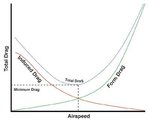FLYBOYJ
"THE GREAT GAZOO"
And that's fair enough. At least when you read the report it gives some inkling of what was going on with the aircraft. To say that an airplane is "worn out" paints a very broad picture in determining why noted performance figures were attained.You can read the other reports on my site, too. I was not there the 1940s, I can't tell you if there was a strange humming noise coming out of the reduction gear- I can only read the reports written on the events, and I am sure they are already a concentrated, selected reflection on the reality..

